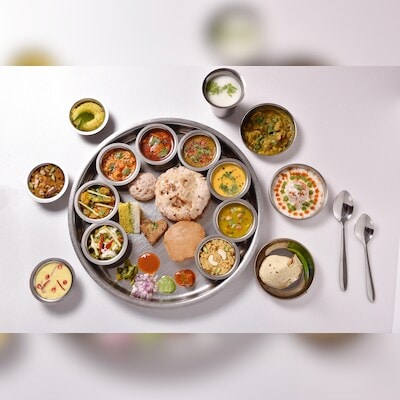)
Veg thali (Photo: Shutterstock)
Cost of a vegetarian thali rose by 11 per cent on a year-on-year (Y-o-Y) basis, while the cost of a non-vegetarian (non-veg) thali declined by 2 per cent in September 2024, according to estimates from CRISIL Market Intelligence and Analytics Research released on Friday.
The average cost of a thali is based on input prices across the four regions of India —north, south, east, and west. Monthly price fluctuations reflect their impact on household expenditures, with key ingredients such as cereals, pulses, broiler chicken, vegetables, spices, edible oil, and cooking gas contributing to price changes.
Contents
High prices, low supply drives veg thali costs
The increase in the veg thali cost was primarily driven by a sharp rise in vegetable prices, which account for approximately 37 per cent of the overall cost. Onions, potatoes, and tomatoes, key ingredients of the meal, saw significant price hikes of 53 per cent, 50 per cent, and 18 per cent, respectively, due to a drop in supply. The shortage of onions and potatoes was caused by lower arrivals in the market, while tomato production was affected by heavy rainfall in Andhra Pradesh and Maharashtra.
Pulse prices, which contribute around 9 per cent to the cost of a veg thali, also increased by 14 per cent. This rise is attributed to reduced production last year, leading to lower stock availability this year, adding further pressure on the overall cost of a vegetarian meal.
However, an 11 per cent decrease in fuel costs helped prevent a more substantial rise in thali prices. The price of a 14.2 kg LPG cylinder in Delhi dropped from Rs 903 in September 2023 to Rs 803 in March 2024.
Non-veg thali cost drops 2 per cent
For the non-veg thali, which is typically twice as expensive as its vegetarian counterpart, a 13 per cent decline in broiler prices provided relief. Broiler chicken, which makes up 50 per cent of the cost of a non-veg thali, has seen price drops amid steady demand, contributing to the overall 2 per cent Y-o-Y reduction in non-veg thali costs.
Month-on-month stability in thali prices
On a month-on-month (M-o-M) basis, the cost of both veg and non-veg thalis remained stable. While onion prices surged by 14 per cent due to tight rabi stock and reduced export duty, the increase was offset by a 2 per cent decline in potato prices and a 9 per cent drop in tomato prices. The availability of potatoes from cold storage and higher tomato arrivals from southern and western markets helped stabilise the thali cost.
For non-veg meals, stable broiler prices contributed to maintaining the cost of non-veg thalis, as steady demand balanced the market.
Analysing the divergent trends in price
Commenting on the trends, Pushan Sharma, director of research at Crisil MI&A, said, “Costs of home-cooked thalis showed divergent trends in September – the veg thali cost increased 11 per cent on-year, while that of the non-veg thali declined 2 per cent. The uptick in veg thali cost was largely due to an increase in the prices of vegetables. Prices of onion, potato, and tomato rose 53 per cent, 50 per cent, and 18 per cent on-year, respectively, with the first two driven by lower arrivals and the third by the impact of heavy rainfall on output. The non-veg thali cost, on the other hand, was weighed down by an on-year decline in the cost of broiler.”
Looking ahead, Sharma expects onion prices to moderate once the kharif supply (monsoon crop) reaches the market. Potato prices are also anticipated to drop, but tomato prices may remain elevated due to lean supply.
First Published: Oct 04 2024 | 12:40 PM IST













Leave a Reply